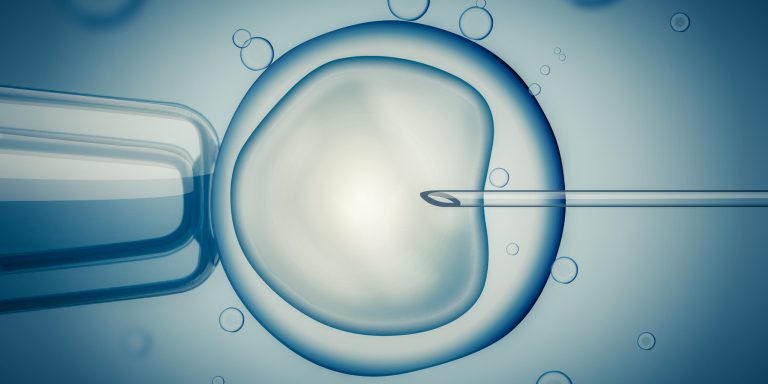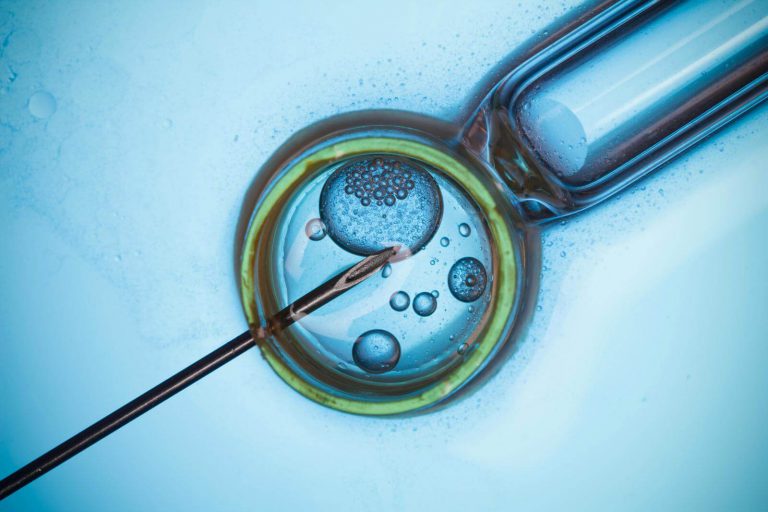During a cycle of IVF, an embryo will be transferred into a woman’s uterus. This embryo may be fresh or frozen. The transfer of frozen embryos is called FET (frozen embryo transfer). The success rates of frozen and fresh embryo transfer are similar when it comes to producing pregnancy in women under 35, and recent large scale studies indicate that FET may result in more favorable outcomes.
Embryo Transfer
During any IVF (in vitro fertilization) procedure, eggs and sperm are combined external to a woman’s body. These fertilized eggs are then allowed to develop into embryos. Eventually, one or more of these embryos will be placed inside the uterus – a process called embryo transfer.
What is fresh embryo transfer?
During fresh embryo transfer, one or more recently developed embryos from the current cycle of IVF are transferred into the uterus as soon as they are ready – often 3 to 6 days after egg retrieval.
What is frozen embryo transfer?
The frozen embryo transfer (FET) process involves taking embryos which have been cryopreserved (frozen) previously and placing them into the uterus.
Fresh vs. Frozen Embryo Transfer Success Rates
A large-scale meta-analysis done in 2011 of several studies suggests that FET is more successful in producing ongoing pregnancies than fresh embryo transfer. This is backed up by more recent large-scale studies, which produced similar results (1 , 2).
However, not all studies concur. Success rates for the different procedures differs seriously from clinic to clinic, and can be impacted by things like the age of the patient and the use of donor eggs. When you compare success rates, it is also very important to understand the process an IVF clinic goes through in freezing embryos. Many clinics start with a fresh embryo transfer, selecting the best quality embryo to use, and then freezing the rest. In this case, the clinic may be using embryos it considers lower quality for subsequent frozen embryo transfers.
The latest available data from a CDC 2013 report indicates that, nationally, the percentage of fresh embryo transfers resulting in a term, normal weight, singleton live birth for women under 35 was 28.2%, while the percentage of frozen embryo transfers resulting in a live birth for the same age group was 28.6%. The data shows FET healthy live birth rates were consistently higher for each age group. However, it is important to note the difference is minor.
Other Advantages of Frozen Embryo Transfer
Because of the different success rates clinic to clinic, it is also important to consider other advantages of fresh vs. frozen embryos.
Typically, the cost difference between fresh embryo transfer and FET is significant, with FET being much cheaper, but this is because a great deal of the “work” has already been done with FET in a previous cycle (egg harvesting, insemination, development of embryos, etc.). However, costs may vary from clinic to clinic.
“Cycles using frozen embryos usually are less expensive and less invasive than cycles using fresh embryos.”
CDC ART 2013 Fertility Clinic Report
Additionally, using frozen embryos can reduce the strain on a woman’s body in the event of repeated cycles. Repeated fresh embryo transfers require repeat egg retrievals and this can increase the risk of negative side affects related to stimulation of the ovaries. With the use of frozen embryos, one retrieval can cover multiple cycles.
While there may still be some disagreement about whether fresh or frozen embryos have a higher success rate, there are good reasons for couples to use frozen embryos for repeated IVF cycles.






